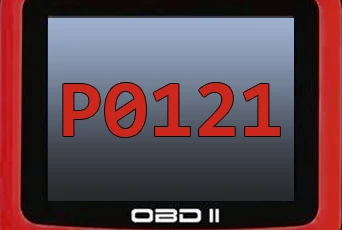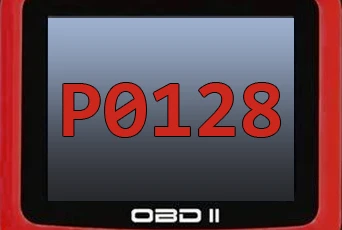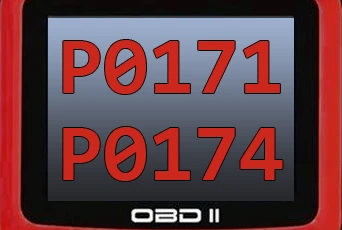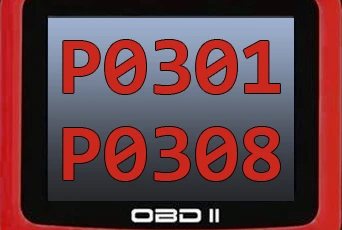DTC P0301-P0308
Issue Description
Diagnostic Trouble Codes P0301 to P0308 are part of a family of cylinder-specific misfire codes. These codes are commonly found in Dodge vehicles including the Ram, Durango, Charger, Challenger, Journey, and others. Each code corresponds to a misfire in a particular cylinder:
- P0301 Cylinder 1 Misfire Detected
- P0302 Cylinder 2 Misfire Detected
- P0303 Cylinder 3 Misfire Detected
- P0304 Cylinder 4 Misfire Detected
- P0305 Cylinder 5 Misfire Detected
- P0306 Cylinder 6 Misfire Detected
- P0307 Cylinder 7 Misfire Detected
- P0308 Cylinder 8 Misfire Detected

Symptoms
When a misfire occurs in any of the cylinders, the vehicle may exhibit the following:
- Check Engine Light (CEL) is on
- Rough idling or shaking.
- Reduced engine power or hesitation.
- Engine stalling at idle or during acceleration.
- Poor fuel economy.
- Increased tailpipe emissions.
- Possible fuel smell from the exhaust.
Causes
Each misfire code points to a specific cylinder, but the root causes are generally similar across all cylinders. Common causes include:
- Ignition System Failures
- Worn or fouled spark plugs.
- Defective ignition coils or coil packs.
- Damaged spark plug wires (in older models).
- Incorrect spark plug gap.
- Fuel Delivery Problems
- Clogged or malfunctioning fuel injectors.
- Low fuel pressure from a failing fuel pump or clogged filter.
- Leaking injector seals.
- Faulty fuel pressure regulator.
- Air/Vacuum Leaks
- Intake manifold gasket leaks near the affected cylinder.
- Cracked vacuum hoses.
- Stuck-open or leaking EGR/PCV valve.
- Mechanical Issues
- Low compression in the affected cylinder.
- Worn piston rings, valve guides, or valves.
- Broken valve springs.
- Timing chain/belt misalignment or wear.
- Electrical or Sensor Problems
- Faulty camshaft or crankshaft position sensor.
- Damaged engine wiring harness or connectors.
- ECU/PCM software errors or internal failure.
Diagnose
Proper diagnosis is key to resolving these codes efficiently. Here's a step-by-step guide:
- Step 1: Scan and Confirm the Code
- Use an OBD-II scanner to identify which cylinder is misfiring.
- Check for related codes (e.g., P0171 for lean condition, or multiple P030X codes).
- Step 2: Visual Inspection
- Examine spark plugs, ignition coils, and wires (if applicable).
- Look for oil or coolant leaks near the spark plug wells.
- Inspect injector connectors and wiring for damage.
- Step 3: Swap Components
- Swap spark plug and coil from the misfiring cylinder with those from a non-misfiring cylinder.
- If the misfire follows the component, it is likely the cause.
- Step 4: Compression and Leak-Down Test
- Perform a compression test to verify engine mechanical integrity.
- A leak-down test can help pinpoint internal issues like valve or piston ring damage.
- Step 5: Fuel and Sensor Testing
- Use a fuel pressure gauge to check system pressure.
- Test fuel injectors using a noid light or listen for clicks while running.
- Check camshaft/crankshaft sensor readings with a scan tool.
Solutions
Based on diagnosis, apply the appropriate solution:
- Ignition System Fixes
- Replace spark plugs (use OEM or recommended plugs).
- Replace faulty ignition coils.
- Repair or replace damaged plug wires.
- Fuel System Fixes
- Clean or replace clogged fuel injectors.
- Repair or replace faulty injector wiring.
- Replace weak fuel pump or clogged fuel filter.
- Air/Vacuum Leak Repairs
- Replace intake manifold gaskets if leaking near affected cylinder.
- Repair cracked or loose vacuum hoses.
- Clean or replace EGR/PCV valves.
- Mechanical Repairs
- Repair engine internals causing low compression (e.g., valve job, piston rings).
- Inspect and fix timing issues if present.
- Electrical and ECU Fixes
- Replace faulty crankshaft/camshaft position sensors.
- Reflash or replace PCM if necessary.
- Repair wiring harness issues affecting ignition or injector control.
Preventive Maintenance Tips
To avoid recurrence of cylinder misfire codes:
- Change spark plugs and coils per Dodge's recommended maintenance interval.
- Use top-tier fuel and regularly clean the fuel system.
- Inspect vacuum lines and PCV system during routine service.
- Replace air and fuel filters at scheduled intervals.
- Monitor and address any CEL promptly.




